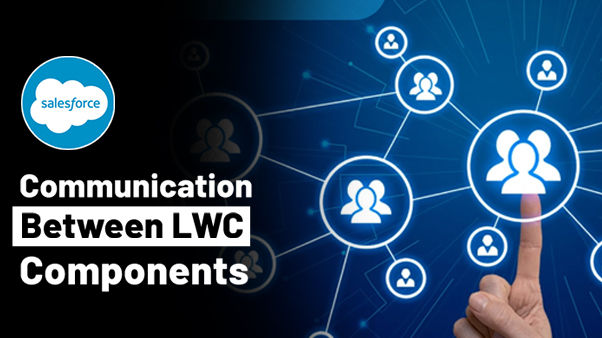How to Write LWC in Salesforce? & Understanding Component Communication in LWC
- amit1697
- Sep 12, 2022
- 3 min read
Lightning Web Components (LWC) have upgraded the way developers build dynamic user interfaces in Salesforce. While tools like Flows handle backend automation and process orchestration, LWCs bring those processes closer to end users with rich, responsive UI components.
In our earlier blog on Flows in Salesforce, we explored how Flows efficiently automate business processes. But what happens on the UI layer when you have multiple components that need to “talk” to each other?
That’s where component communication in LWC comes in. In this guide, we will break down the different types of communication between LWC components, explain when to use each, and discuss why mastering them is crucial for building scalable Salesforce apps.
making it lightweight and high-performing compared to the older Aura components.
With LWC, you write components using:
HTML – for the template and layout
JavaScript – for business logic and reactive data
CSS – for styling
How to Write Your First LWC in Salesforce
Here’s a simple guide to create your first Lightning Web Component:
Step 1: Set up your environment
Install Salesforce CLI
Install Visual Studio Code (VSCode) and the Salesforce Extension Pack
Step 2: Create a Salesforce DX project
bash
sfdx force:project:create -n lwcDemoStep 3: Create your LWC In VSCode terminal:
bash
CopyEdit
sfdx force:lightning:component:create --type lwc --componentname helloWorld --outputdir force-app/main/default/lwc
Step 4: Add code to your component
helloWorld.html
html
<template>
<h1>Hello from LWC!</h1>
</template>
helloWorld.js
javascript
import { LightningElement } from 'lwc';
export default class HelloWorld extends LightningElement {}
Step 5: Deploy to org
bash
CopyEdit
sfdx force:source:deploy -p force-appNow, add your component to a Lightning App page using the Lightning App Builder.
Types of Communication in LWC
One of the most common challenges developers face is communication between components in LWC.Let’s explore the types:
1. Parent to Child Communication (Using Public Properties)
You can expose variables in the child component using the @api decorator. Example:
javascript
CopyEdit
// childComponent.js
import { LightningElement, api } from 'lwc';
export default class ChildComponent extends LightningElement {
@api message;
}
html
CopyEdit
<!-- parentComponent.html -->
<c-child-component message="Hello Child!"></c-child-component>
This way, the parent passes data directly to the child.
2. Child to Parent Communication (Using Custom Events)
Child components can notify parents using events.
javascript
CopyEdit
// childComponent.js
handleClick() {
const event = new CustomEvent('notify', { detail: 'Data from Child' });
this.dispatchEvent(event);
}
html
CopyEdit
<!-- parentComponent.html -->
<c-child-component onnotify={handleNotify}></c-child-component>
javascript
CopyEdit
// parentComponent.js
handleNotify(event) {
console.log(event.detail); // 'Data from Child'
}
This is an effective way for child components to send data or signals up to the parent.
3. Communication Between Unrelated Components (Using Lightning Message Service)
For communication between sibling components or components on different DOM trees, use
Lightning Message Service (LMS).
Define a message channel in force-app/main/default/messageChannels/.
Use publish and subscribe APIs from LMS to exchange data.
This is powerful when components don’t share a direct relationship.
4. Using Pub/Sub (For Components on the Same Page)
Before LMS, developers often used a Pub/Sub module to broadcast and listen for events between sibling components. While LMS is now preferred, Pub/Sub remains useful in certain scenarios.
Summary
Lightning Web Components make building Salesforce UIs faster and more scalable. Understanding component communication in LWC helps you:
Build modular applications
Ensure components interact seamlessly
Improve code maintainability
Key communication types in LWC:
Parent to Child: Using @api
Child to Parent: Using custom events
Unrelated Components: Using Lightning Message Service
Sibling Components: Using Pub/Sub
Need help mastering Lightning Web Components?
At Cloud Science Labs, we help teams master Lightning Web Components, from building clean, scalable UIs to managing complex parent-child communications. Contact us to accelerate your LWC journey.
Reach out to us at digital@cloudsciencelabs.com to get started.




Comments